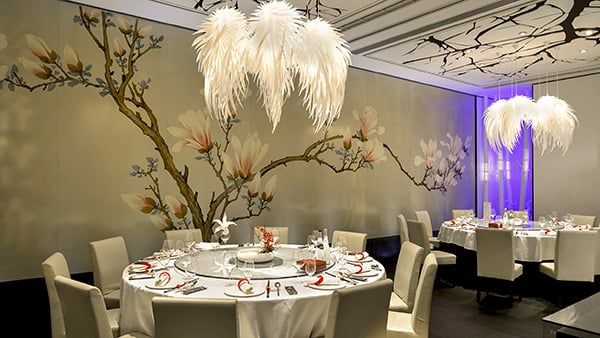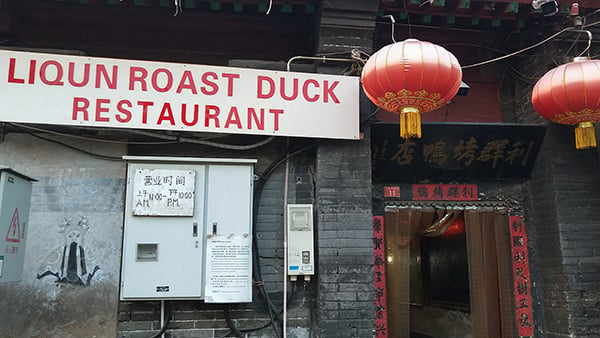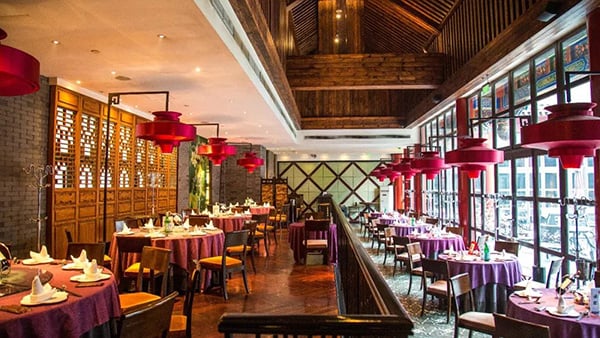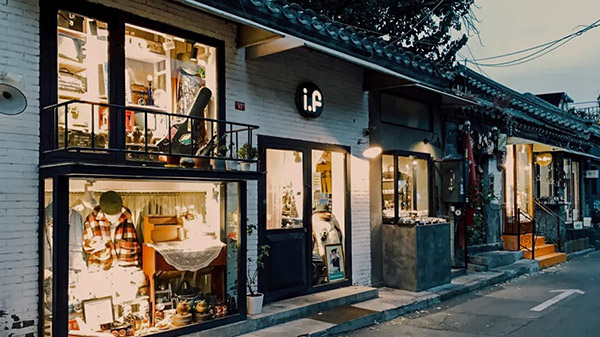Famous Beijing Chinese food: Must-eat dinners in Beijing
If you visit Beijing for no other reason than its food, you won’t be disappointed. With a variety of dishes and dining options to suit every taste and budget, in many ways, China’s capital is a culinary delight. Be sure to plan your menus ahead to take advantage of food that will surely surprise and delight.

Peking Roast Duck
(Beijing Kaoya)
Experience the authentic traditional Beijing cuisine that is Peking duck, renowned worldwide as an exquisite dish, fit for an Empress. Invented during the Ming Dynasty, Peking roast duck was a royal delicacy. In keeping with tradition, only the very best duck is chosen and roasted by fire. Read more
The tender, moist meat is covered by crispy, chewy skin. While being rich in fats, Peking Duck tends not to be overly greasy. Along with sliced shallots, delicate pancakes made of millet flour, and a fermented flour sweet sauce, Peking Duck is a sensational culinary experience to try while visiting China.
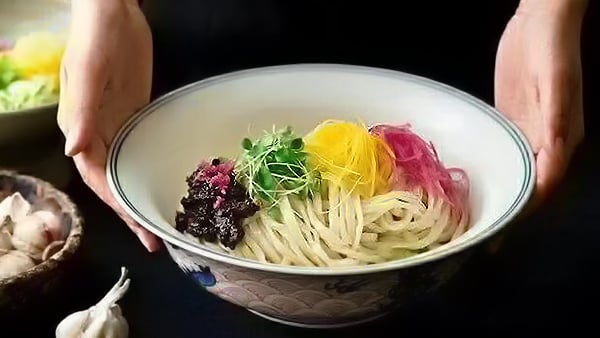
Old Beijing Noodles with Fried Bean Sauce (Zhajiangmian)
As Beijing’s signature noodles, Zhajiangmian is the most common noodle dish cooked by local Beijing families. The wheat noodles are topped with ‘zhajiang’, otherwise known as fried bean paste with pork or beef mince, as well as sliced or shredded vegetables (cucumbers, Chinese cabbage, radish and bean sprouts).

Beijing instant-boiled sliced mutton hotpot
(Shuanyangrou)
Regarded as an authentic Beijing hotpot, you may discover this dish served in a traditional style in local restaurants where distinctive copper pots and charcoal form part of the experience of enjoying this meal.

Sauteed shredded pork in sweet bean sauce
(Jingjiang Rousi)
Jingjiang Rousi is stir fried sauteed shredded pork in sweet soya paste served with shredded scallions and tofu sheets that are used to wrap the filling, very similar to the way Peking roast duck is wrapped in a pancake.

Mustardy cabbage mounds
(Jiemodun’er)
Mustardy cabbage mounds - or Jiemodun’er - is a cold dish traditionally eaten by local Beijing families for Chinese New Year Eve’s dinner. It is pickled Chinese cabbage served with mustard sauce, and the refreshing flavor and crispness of ingredients is a welcome balance to other rich dishes that are invariably included in Chinese New Year’s feasts.

Sauteed pork balls with brown sauce
(Jiaoliu Wanzi)
Jiaoliu Wanzi is deep-fried meatballs that are tender but with a crispy crust. The meatballs are stir-fried and coated in ‘brown’ sauce, which is essentially a mixture of both light and dark soy sauce, water, salt, sugar and potato starch.
Local snacks and street food
If you’re feeling adventurous during your time in Beijing, then you’ll want to sample some of Beijing’s finest street food. With many snacks unique to Beijing, expect an unrivalled culinary adventure while visiting here.
Stewed pork liver and intestines Beijing-style (Chaogan’er)
Stewed pork liver and intestines Beijing-style (Chaogan’er)
Bittern flapjack
(Luzhu Huoshao)
Bittern flapjack
(Luzhu Huoshao)
Quick boiled Halal tripe (Baodu)
Quick boiled Halal tripe (Baodu)
Deep fried dough rings (Jiaoquan)
Deep fried dough rings (Jiaoquan)
Fermented mung bean milk (Douzhi’er)
Fermented mung bean milk (Douzhi’er)
Beijing style crepes (Jianbing)
Beijing style crepes (Jianbing)
Grilled meat skewers
(Kao Chuan’er)
Grilled meat skewers
(Kao Chuan’er)
Candied hawthorn (Tanghulu)
Candied hawthorn (Tanghulu)
Tuckahoe pie or Fuling pancake sandwich (Fulingbing)
Tuckahoe pie or Fuling pancake sandwich (Fulingbing)
Old Beijing-style yoghurt (Suannai)
Old Beijing-style yoghurt (Suannai)
Glutinous rice rolls stuffed with sweet red bean paste (Ludagun)
Glutinous rice rolls stuffed with sweet red bean paste (Ludagun)
Steamed glutinous rice cakes with sweet stuffing (Aiwowo)
Steamed glutinous rice cakes with sweet stuffing (Aiwowo)
Seasoned flour mush (Chatang)
Seasoned flour mush (Chatang)
Sweet pea pudding or pea flour cake (Wandouhuang)
Sweet pea pudding or pea flour cake (Wandouhuang)
Recommended restaurants in Beijing
Beijing is a food lover’s heaven, so among the many things to do in Beijing, you absolutely must include dining out. Come prepared to give your taste buds an adventure when you visit, but do your research first. That’s how we can help. In this section, we’ve compiled a list of recommended restaurants for some of Beijing’s most well-known and celebrated dishes. Hungry? Let’s fix that with our list of recommended restaurants in Beijing.
For Peking Roast Duck

Quanjude
Known worldwide for its Peking Roast Duck, Quanjude was established in 1864. Hugely popular with travelers from all around the globe, dining here is a ‘must-do’ while in Beijing.
Da Dong
Da Dong is another restaurant you simply miss while in Beijing. With its claim to fame being its Peking Duck is made with leaner birds than those of other restaurants, as well as the fact it has been awarded ‘Best Chinese Restaurant of the Year’ (according to thebeijinger.com). It’s highly recommended you book ahead and arrive hungrily, not least because the menu is 160 pages, so there are plenty of dishes to choose from.
Siji Minfu Roasted Duck
Visit Siji Minfu for Beijing’s best value Peking Roasted Duck, as well as a variety of traditional Beijing dishes that are favorites with the locals.
Liqun Roast Duck Restaurant
Liqun Roast Duck Restaurant is a family-owned restaurant in Beijing’s famous hutong. It has an excellent reputation and has earned favor with locals and travelers alike for remaining true to the traditional method of cooking the ducks used in their Peking Roasted Duck.
1949 Duck de Chine
Arguably Beijing’s best duck (at least when it comes to the performance of slicing the duck), Duck de Chine captivates its guests with a dining experience, not just a meal. If it’s a beautiful dining memory you’re after, put 1949 Duck de Chine at the top of your list.
Ya Wang Restaurant
At Ya Wang Restaurant you will find a showcase of Peking Roasted Duck, Cantonese cuisine and seafood, and a regularly updated menu sure to impress.
For Beijing instant boiled mutton hotpot

Dong Lai Shun
Founded in 1903, discover the traditional Muslim way of preparing instant-boiled mutton. With a lovely history, this restaurant began as a snack stall on Wangfujing Avenue in Beijing. Locals showed their support as diners and it wasn’t long before the street stall became a restaurant. Expect to enjoy the house specialty, instantly boiled mutton hotpot, as well as other traditional Muslim dishes.
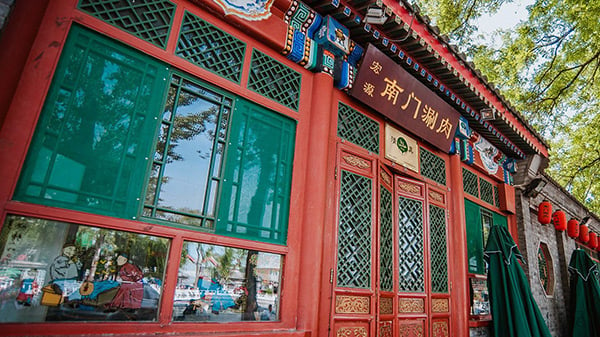
Nanmen Shuanrou
The restaurant is one of the best-known hotpot restaurants in Beijing. The sauce for dipping boiled mutton is the founder’s secret recipe. Dishes are served in coal-fired bronze pots, while the restaurant itself has a rustic feel to it, unlike other similar venues. Ideal for a one-time visitor to Beijing.
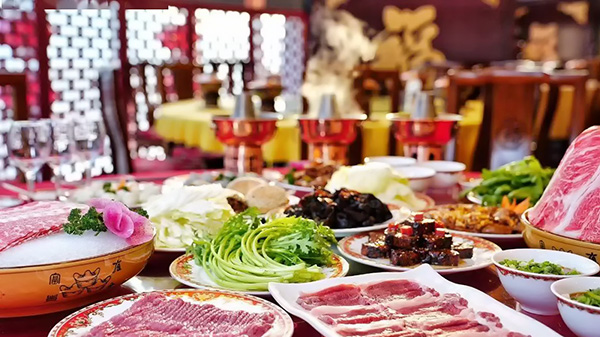
Man Fu Lou
If you’re keen to experience one of Beijing’s best hot pot dining options, then Man Fu Lou has to be included on your list. Choose from a vast selection of dishes, but our guides recommend the Qing dynasty imperial hot pot banquet, if you can’t bear to share, order individual hot pots for each guest. The hand-cut fresh meat is essential for what will definitely be a memorable meal.

Ju Bao Yuan
They say you know a good restaurant by the length of the queue out front. If that’s the case, then Ju Bao Yuan definitely ticks the box. Located in Niu Jie, a Muslim neighborhood in Beijing, it is one of Beijing’s authentic traditional hotpot restaurants that always has a long queue of diners waiting to enjoy its offerings.
For local Beijing snacks
Huguosi Snack Shop
Huguosi Snack Shop
Niujie Street
Niujie Street
Xianyukou Street
Xianyukou Street
‘Guijie’ Dongzhimen Inner Street
‘Guijie’ Dongzhimen Inner Street
Yaoji Chaogan
Yaoji Chaogan
Longfusi Snack Shop
Longfusi Snack Shop
For imperial court cuisine

Beijing Fangshan Restaurant
Located in Beihai Park, expect to dine like an emperor when you visit. Established in 1925 by four chefs who had worked for the last emperor of the Qing dynasty, Fangshan is the term used to refer to imperial cuisine. Many generations of chefs have worked at the restaurant, with some undertaking research at the Palace Museum so they can prepare dishes once only made for royalty. The Manchu Han Imperial Feast is revered as the finest example of imperial cuisine, and should not be ordered by the faint-hearted.

Ting Li Guan Restaurant
For another regal dining experience, book your table at Ting Li Guan Restaurant at the Summer Palace. Offering a truly imperial experience, Ting Li Guan was originally built by Emperor Qianlong for his mother. Although it was razed to the ground by allied forces in 1860, Empress Dowager Cixi rebuilt it and used it to entertain foreign diplomats, court officials, and the emperor’s wives. Every detail of the experience is considered, from the plates, cutlery, decor, dishes, and service, with each element contributing to provide a truly special experience.

Beijing Yuxiandu Royal Gastronomy Museum
Well, if there was ever a reason to dine out, the Beijing Yuxiandu Royal Gastronomy Museum is it. Taking visitors on a ‘dynastic dining’ adventure, the museum recreates imperial banquets from various dynasties, thus providing insights into the kinds of meals enjoyed by emperors throughout the centuries. Apart from an imperial banquet, diners are entertained with performances that would have kept emperors happy during their meal. And if that isn’t enough for you, wander through the museum’s exhibitions and private banquet suites that give modern-day diners a little taste of imperial history.

Family Li Imperial Cuisine
Receiving one Michelin star for its excellent food, Family Li Imperial Cuisine is not your everyday family Chinese restaurant. It is a fourth-generation family of chefs who truly have an imperial cooking pedigree with family members forming part of the Qing dynasty’s kitchen. In addition to its tastefully understated decor, you will appreciate the set menus that feature notable dishes like braised ‘tiger skin’ pork. If you plan to visit, make sure you book ahead.
For dumplings and noodles
Don’t even think about visiting Beijing without savoring its dumpling and noodle offerings. In our must-try list here, we’re certain you’ll be lining up for seconds because, let’s face it, one round of dumplings (or noodles for that matter), really isn’t enough.

Qingfeng Steamed Dumpling Shop
Operating as a large chain of stores, the Qingfeng Steamed Dumpling Shops will definitely appeal to international travelers as much as they do to Beijingers. These popular dumpling shops offer good quality food at remarkably cheap prices. The stores’ setup has barely changed over six decades (they still use a cafeteria-style ticketing system). The quality of baozi sold there hasn’t changed either. Wondering what you should try? We guarantee you won’t be able to pass up their now-famous juicy pork and green onion-filled buns (baozi). Or maybe you’ll opt for the wonton soup, Chaogan, congee and other side dishes. Whatever you do, just be sure to make time to visit.

Xian Lao Man restaurant (authentic old Beijing style)
If you are looking for simple, authentic food done right, make sure Xian Lao Man restaurant is on your list of things to do in Beijing. Considered by some to be the very best for dumplings in Beijing, expect to find traditional flavors, as well as the more unusual. Noodles are also a specialty, but dumplings are really the stand out here.

Baoyuan Dumplings
With David Beckham having famously graced this venue, Baoyuan Dumplings is a Michelin Guide restaurant that is highly regarded for its colorful dumplings. What will you find at Baoyuan? Dumplings that are as colorful on the outside as they are inside. Expected to find dumpling dough that has been dyed with vegetables and fruits to create both the weird and wonderful. Yuanbao - or silver ingot shaped dumplings - are served in plates of six and are very reasonably priced. Arrive hungrily and leave completely satisfied.

Hai Wan Ju
Among the many culinary adventures to be enjoyed in Beijing, international travelers must really include an experience of watching the skill of artisans making hand-pulled noodles. The perfect place for a dinner like no other can be found at Hai Wan Ju (or Beijing Zhajiangmian as it is otherwise known). At Hai Wan Ju, hand-pulled noodles are served with shredded vegetables and black bean sauce. There are two house specialties: guo shui (rinsed in cool water) and guo tiao (served straight out of the pot). While the main appeal of Hai Wan Ju is obviously the noodles, there is also much to be said for the authentic ‘old Beijing’ vibe of the place that provides a window to a Beijing of another time.

Chaishi Fengwei Zhai
Rated by the Michelin guide, Chaishi Fengwei Zhai provides unassuming surroundings for enjoying what many locals consider perhaps one of Beijing’s best examples of beef noodle soup. The only way to know is to try for yourself at this authentic local Beijing restaurant.
Other specialty restaurants in Beijing
With so many dining options to choose from, it’s absolutely essential to whittle your list down before landing in Beijing. Whatever your taste or budget, we’re sure you’ll find the exact match among the many specialty restaurants that now form part of Beijing’s vibrant dining scene.
Haidilao
Haidilao
Sishi Tongtang
Sishi Tongtang
Huajia Yiyuan
Huajia Yiyuan
Najia Xiaoguan
Najia Xiaoguan
Tanjia Cuisine
Tanjia Cuisine
King’s Joy
King’s Joy
TRB Hutong
TRB Hutong
Beijing bars and Beijing dining precincts
Enjoy Beijing at night by visiting one of its famous precincts dedicated to dining and drinks. These areas have become even more popular as demand grows for more options that integrate the flavors and tastes of both east and west.
Sanlitun
Located in close proximity to international embassies, Sanlitun is an area well known as Beijing’s most prestigious shopping, dining, and entertainment precinct. The area has been popular with locals and internationals alike (particularly expats) since the first bar opened there in 1983. Now Sanlitun is home to a whopping 70 percent of the total number of bars in Beijing and many international brand shops. Make an afternoon and evening of your visit here - you’ll need it!
Shichahai Bar Street
Unlike Sanlitun, Shichahai Bar Street is a veritable oasis where visitors can enjoy drinks and dining without the melee. Shichahai Bar Street has blended the contemporary and traditional, using water landscapes and delightful courtyards as the backdrop for a bar and restaurant precinct without equal. Apart from the many options to eat and drink, the setting itself is fascinating. Discover old style residences and courtyards in the hutong, and wander through the snack streets, which offer a taste of Beijing’s many flavors. Notably, shops like Kao Rou Ji (roast meat) and Bao Du Zhang (famous for tripe) have been operating for many decades.
Guijie
Beijing’s famous Guijie Street - or Ghost Street - is popular among locals as a snack food precinct. Not only is the food fabulous, a wander along this street lit up with its bright red lanterns provides an authentic experience of daily life for modern-day Beijingers. The moniker ‘Ghost Street’ came from the produce markets at which traders would operate from late night to dawn. Working by the light of kerosene lamps gave the appearance of ghosts, hence the name. Make a night of it by starting at one end and working your way to the other.
Wudaoying Hutong
Experience both old and new China as expressed in the Wudaoying hutong. Now a fashionable business precinct that has merged traditional courtyard residences with contemporary enterprises in the form of boutique shops and trendy cafes. You’ll find everything from one-off vintage items to handcrafted wares made by lamas in Tibet. Perfect for those travelers looking for a less mainstream experience of Beijing.


